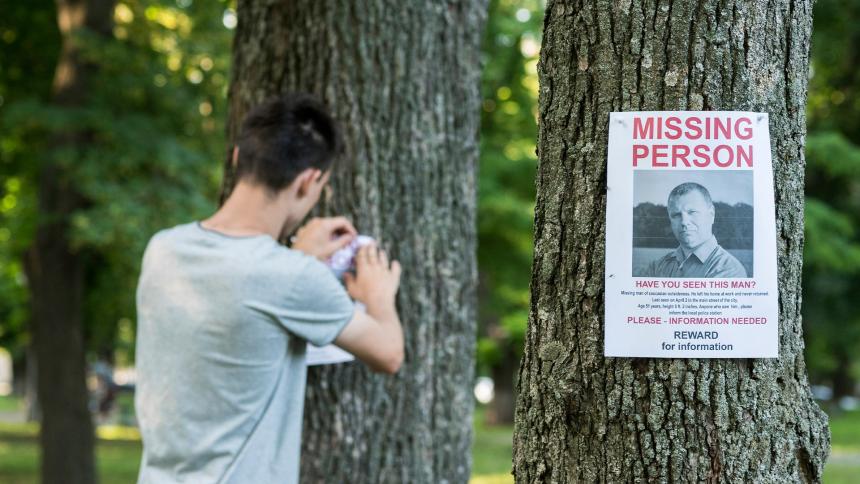
The heartbreaking realities of missing persons cases
In terms of real-life mysteries, there aren’t many news stories more captivating and intriguing than the details of individuals who disappear under mysterious circumstances. When people suddenly vanish and leave no trace - or precious few leads as to where they might be - the result is often heartbreak, confusion and relentless pursuit.
When someone passes away and their body has been found there can be closure and the deceased can be put to rest with dignity. On the other hand, when all a family has is an enigmatic mystery surrounding their whereabouts, the psychological effect on their loved ones can be torturous.
In the UK, around 250,000 people are reported missing each year. In the vast majority of cases, the missing individual will turn up safe and well within a 48-hour period. But, for a small fraction, the nightmare drags on for their family and friends.
A familiar UK example concerns the disappearance of Manic Street Preachers guitarist Richey Edwards, who went missing from a London hotel in 1995 at the age of 27. Edwards had battled with years of depression, alcoholism and self-harm. On the morning of 1st February, it seems Edwards checked out of the Embassy Hotel, leaving behind his packed suitcase which contained gifts for his bandmates. His car was eventually found abandoned near the Severn Bridge, a noted suicide spot, two weeks later. His body however was never recovered, leaving his fans in limbo for decades.
Edwards was officially presumed dead in 2008, though reported sightings have persisted. In an interview with The Guardian in 2015, his sister said, ‘I've never stopped thinking, “I wonder what he would look like today?”’. For her and those he left behind, the agony of ambiguous loss continues.
The families of missing persons face a horrible paradox. Their loved one is gone, but the finality of bereavement is absent. As a result, they are trapped in a cycle of grief, searching and endless questioning. This is why support groups like Missing People have been set up and can provide practical and emotional lifelines.
In the USA, nearly 620,000 individuals are reported missing every year. The vast majority reappear within days, but roughly 80,000 active missing persons cases remain open at any given time. A startlingly huge number.
High profile cases like Gabby Petito, whose body was found in a Wyoming national park after her boyfriend returned alone from a cross-country road trip, attract fevered public interest. On the other hand, there are toddlers who wander from their back gardens or elderly dementia patients who become disoriented, which garner less attention but no less anguish for those left behind.
Thanks to certain television shows, there is greater public awareness of forensic advances that can, in certain circumstances, help to crack unsolved missing persons cases even decades later. DNA databases, isotope testing and digital tracing can provide new leads where traditional evidence has failed.
A recent example is
Determination in the face of uncertainty is common among the loved ones left behind by those who go missing. Support groups try to offer practical guidance - maintaining social media pages and birthday vigils, granting police access to their missing relative’s dental records and DNA and understanding the legal procedures around having the missing declared dead.
In the United States, missing persons cases are handled by local police departments and the FBI. When an adult or child is reported missing, authorities first work to determine if the disappearance was voluntary or involuntary. Signs of foul play, such as blood or evidence of struggle, may lead police to treat the situation as a crime scene.
For involuntary disappearances, law enforcement will immediately open an investigation, interviewing relatives and friends, analysing phone records and financial activity, collecting DNA samples, and seeking security footage or witnesses. AMBER Alerts may be issued for missing children believed to be in danger.
If evidence points to a voluntary disappearance, police typically wait up to two days before opening a formal investigation, with exceptions made for juveniles or individuals considered mentally or physically impaired. After this period, standard missing persons procedures are initiated.
Long-term cases with no leads are said to go ‘cold’ but may be revisited if new evidence emerges. Since 2021, the FBI had over 85,000 active missing persons records that have remained unsolved for over 90 days. Tragically, over 4,400 unidentified human remains are recovered every year in the US alone.
In the UK, missing persons cases also lead to a coordinated response. The process begins with local police forces taking up investigations, with the Missing Persons Bureau entering the frame as time goes on - a division maintained under the National Crime Agency (NCA).
The legal framework in the UK hinges on explicit criteria for categorising missing persons, again differentiating between those who are in danger from those who have potentially left a situation voluntarily. Both the UK and the US are highly surveilled countries, so cases integrate technology into investigations. With city streets adorned with a web of CCTV cameras, investigators can better reconstruct timelines and pinpoint an individual's last known whereabouts with precision.
No matter the circumstances, when people go missing, those left behind endure a devastating time. The unexplained absence of a loved one leaves a hole in their lives that nothing can fill. Questions remain - where are they? Why did they leave? Are they safe or suffering? Dead or alive? Until the missing are found, the questions linger.








